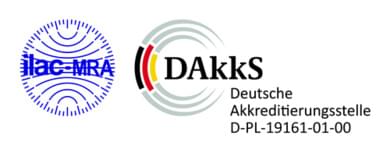Analyse de carbone
La spectroscopie infrarouge est une méthode d’analyse efficace pour déterminer les plus diverses modifications de carbone, comme p. ex.
-
Le carbone total (TC)
-
Le carbone inorganique total (TIC), CO2
-
Le carbone organique total (TOC)
-
Le carbone carbidiquement lié, le carbone libre
existant dans des matrices les plus diverses, comme les sols et les roches, les matières premières et les matériaux oxydiques, les carbures et autres matières.

Nos méthodes de test pour l’analyse de carbone
- DIN ISO 10694:1996-08 - Bodenbeschaffenheit - Bestimmung von organischem Kohlenstoff und Gesamtkohlenstoff nach trockener Verbrennung
- DIN EN 13137:2001-12 - Charakterisierung von Abfall - Bestimmung des gesamten organischen Kohlenstoffs (TOC) in Abfall, Schlämmen und Sedimenten
- DIN EN 13639:2002-07 - Bestimmung des Gesamtgehalts an organischem Kohlenstoff in Kalkstein (hier: Alternativverfahren 2, Ofenoxidation mit Infrarotdetektion)
- DIN EN 13639 Berichtigung 1:2006-09 - Bestimmung des Gesamtgehalts an organischem Kohlenstoff in Kalkstein
- DIN EN ISO 21068-2:2008-12 - Chemische Analyse von Siliciumcarbid enthaltenden Rohstoffen und feuerfesten Erzeugnissen - Teil 2: Bestimmung des Glühverlustes und Gehaltes an Gesamtkohlenstoff, freiem Kohlenstoff und Siliciumcarbid
- DIN 51075, Teil 2:1984-03 - Prüfung keramischer Roh- und Werkstoffe, Chemische Analyse von Siliciumcarbid, Direkte Bestimmung von freiem Kohlenstoff
- DIN 51075, Teil 3:19834-03 - Prüfung keramischer Roh- und Werkstoffe, Chemische Analyse von Siliciumcarbid, Bestimmung des Gehaltes an Gesamtkohlenstoff


